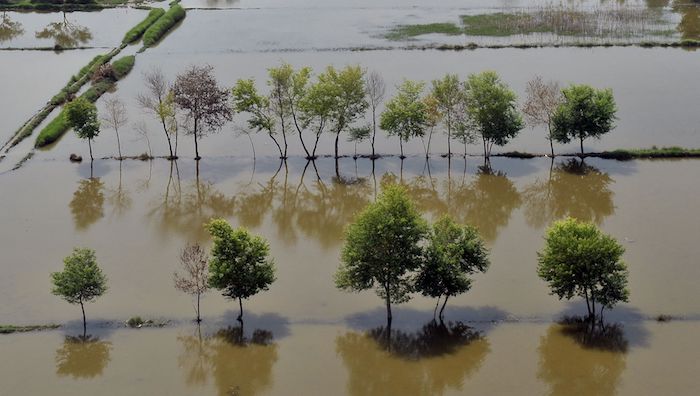Sydney floods add to soaring vegetable prices

Soaring vegetable prices could be here to stay for some time, with the New South Wales flood crisis just the latest in a round of hits driving grocery bills sky-high.
In Camden, on the south-western outskirts of Sydney, vegetable producer Paul Grech’s crop of cabbages and baby spinach had been “wiped out” by the swollen Nepean River, he told ABC Rural news.
It is the third flood to hit his farm this year, washing away an estimated $680,000 in turnover. “You don't get anything after a flood,” he said.
With the price of inputs like fertiliser and fuel also rocketing, Mr Grech predicted consumer grocery bills were likely to feel the cumulative impact: "I think it's been coming for a while. People haven't been paying a lot for it."
“People will pay A$4 (US$2.72), A$5 (US$3.40) for a cup of coffee, and … think nothing of it, but if lettuce is A$10 (US$6.80) a lettuce, it hits the news,” he continued.
Furthermore, growers across eastern Australia had suffered from the prolonged wet weather, and the rising costs had to be passed on to consumers, said Tyson Cattle, from the peak industry body AusVeg.
“We're still starting to see some supply coming back onto the market from Queensland,” he described, adding that “obviously, we rely on a lot of Queensland production at this time of year.”
Recovery was underway in some areas but not universal, with some growers still struggling to get into paddocks while others were able to begin replanting.
Mr Cattle expects that “it'll take some time for that supply to come back into the market, but it's certainly on its way.”
He said producers had reported an increase in costs of 35 to 45 per cent, yet retail prices had failed to keep up prior to the latest round of bad weather and supply issues, with growth of only 7.5 per cent.
“[Our growers are] facing a really challenging environment," Mr Cattle concluded, pointing out that “they need to make sure that they're being paid fairly and that they remain viable.”
At the start of June, Australia was already reporting major lettuce shortages and high fruit and vegetable prices.












































